
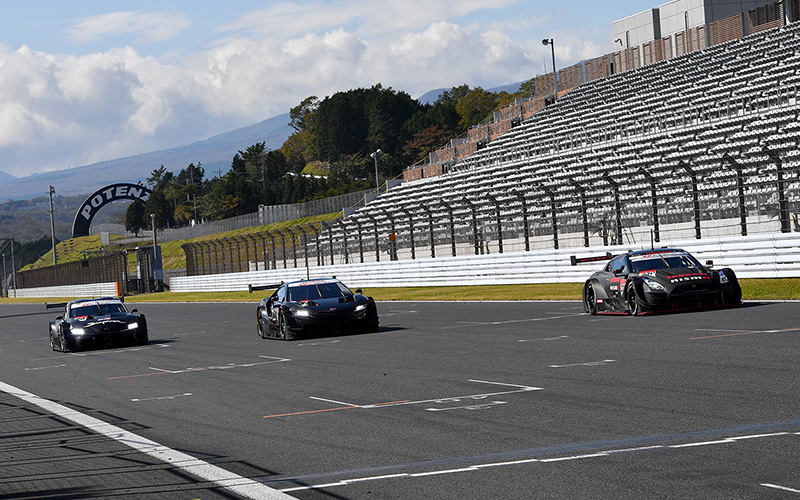
On November 11, with the excitement of the final round of the 2019 still lingering, a development test event for the new 2020 GT500 cars was held at Fuji Speedway in Shizuoka Pref. with two test sessions run in the morning and afternoon.
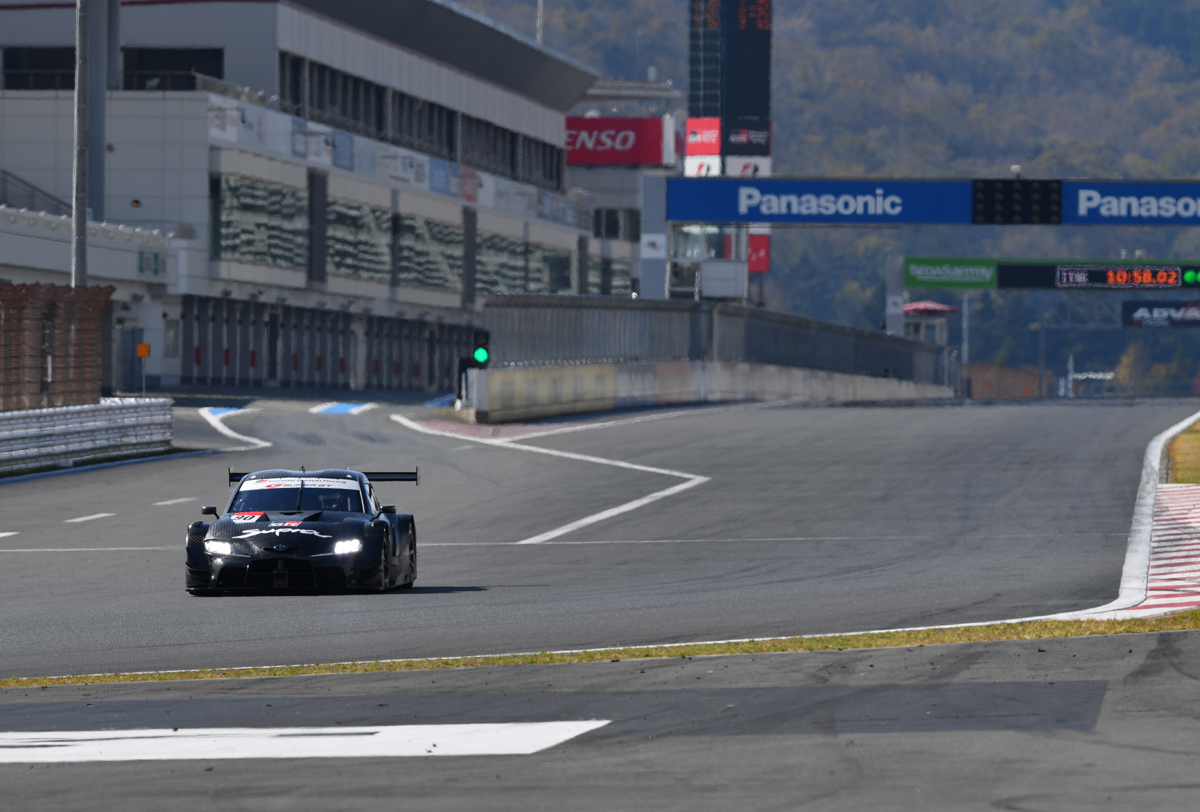
From the start of the morning session the three makes progress through their tests on schedule
On this day, the cars brought To Fuji Speedway for testing to were the three new GT500 class 2020 models that had been displayed by the three makers participating in GT500 the other day at the final round in Twin Ring Motegi. Honda set up its test squad in pit No. 6 for its No. 99 Honda NSX-GT. In pit No. 9 was the TOYOTA GAZOO Racing crew’s No. 90 TOYOTA GR Supra, while pit No. 11 was base for the NISSAN/NISMO No. 230 NISSAN GT-R NISMO GT500, thus putting the three makers to work in rather close proximity to each other. For this first day of testing, each maker’s pit was packed with staffs of 30 to 40 people from early morning, including the engineers from each of the teams involved for the three makes. Both the No. 90 GR Supra and the No. 99 NSX-GT were running on Bridgestone tires, while the No. 230 GT-R mounted Michelin tires.
Just after the start of the first session at 9:00 am, the three cars appeared on the pit road and proceed out to the track, with the GT-R followed by the GR Supra and NSX-GT. From early in the morning the skies had been clear over the nearby city of Gotemba, but now a cloud cover hung over Fuji Speedway, and due to the previous night’s rain that had continued to morning, the first test session was run in wet track conditions. As the teams continued to run through their test schedules, the sun finally came out and began to shine down brightly on the track about 40 minutes into the session, causing the track to dry our gradually.
The best time recorded in the morning’s 2-hour session was that of the No. 90 GR Supra in the 1’29 range set with about 10 minutes remaining in the session. It was the No. 230 GT-R that ran the most laps in the session with 40, while the No. 99 NSX-GT ran 37 laps.
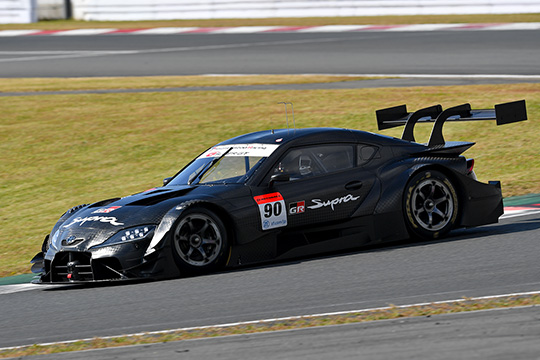
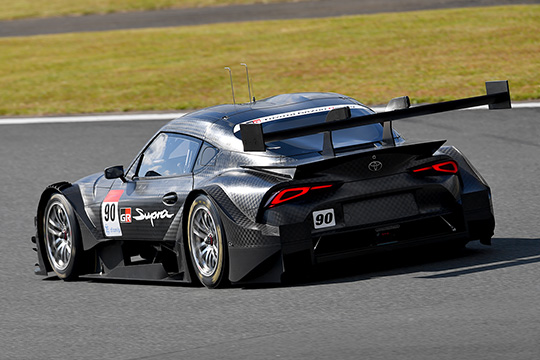
No.90 TOYOTA GR Supra
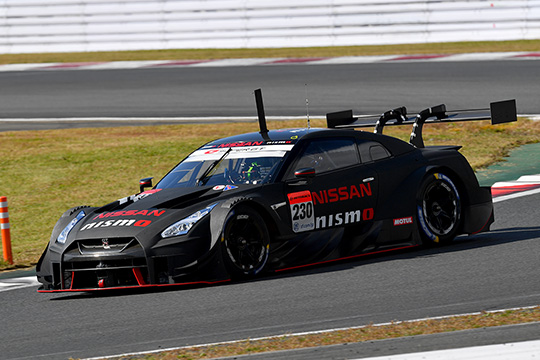
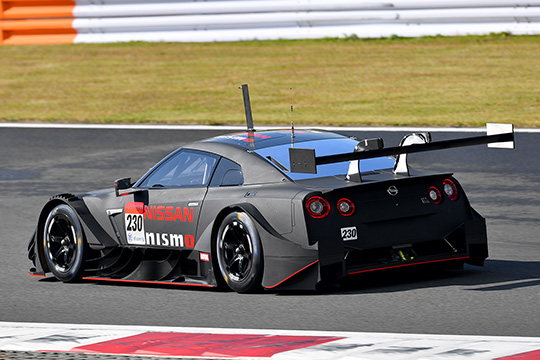
No.230 NISSAN GT-R NISMO GT500
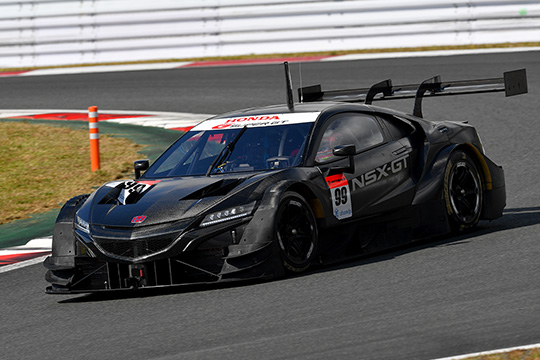
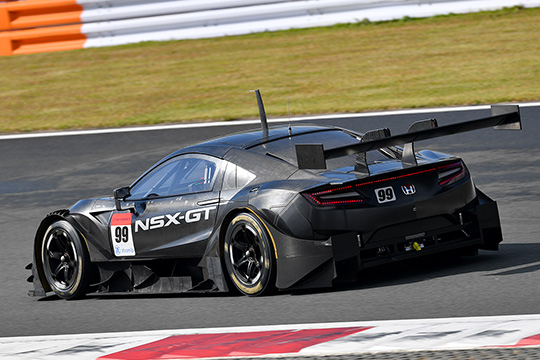
No.99 Honda NSX-GT
In the afternoon, the completely wet track conditions cause the session to end early
From around 1:30 in the afternoon, rain clouds began to cover the circuit as they had in the morning, with the rain soon making the track wet again. The three teams went out on the track to begin their test session, but quickly the track condition worsened and became wet enough to have the cars throwing up rooster tails of spray. And the rain only grew heavier after that, and the session originally scheduled to run from 2:00 to 4:00 was cut short and ended after one hour at 3:00. The best time recorded in the wet conditions of this afternoon session was that of the No. 230 GT-R in the 1’43 range.
TRD engineer Shintaro Shimizu in charge of development of the GR Supra that will debut in 2020 commented: “We have already finished two tests, and for this third test today we brought some aerodynamic parts, and we mainly evaluated them, but we were also working on conformation with the engine control unit (ECU). Going forward, we have to do long-run tests and look at the matching of the tires, so I would say our progress has been about 1/3rd of what we need to do.” In short, the development still has a long way to go.
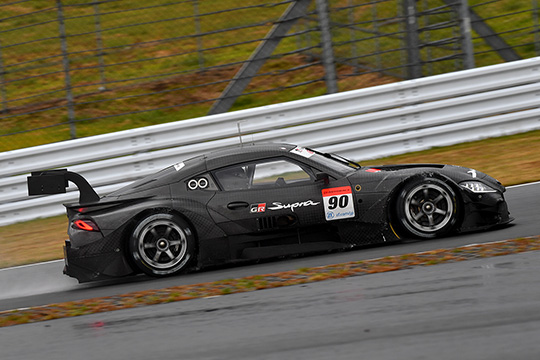
The General Manager for all Nisan related teams, NISMO’s Motohiro Matsumura, commented on the present status of the GT-R NISMO GT500 to debut next season: “We are working on verifying the aerodynamics and engine and bringing together the data with other detail points. In other words, you could say that we are in the process of gradually working on the things in front of us that need to be done. The control systems on this new car are completely different from the ones we have used until now, and we are told that it is still difficult for the drivers to operate them. So, this is something we plan to correct as soon as possible.”
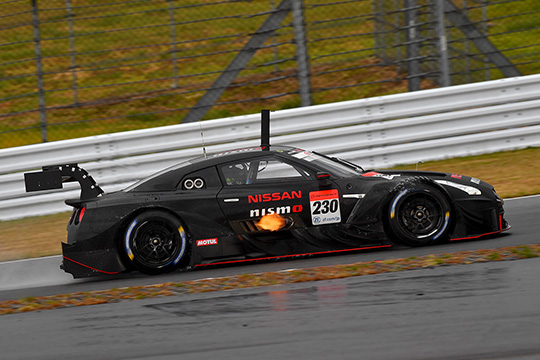
Masahiro Saeki, the SUPER GT project leader in charge for Honda commented about the status of the tests with the greatly changed NSX-GT: “Since the morning’s tests were run on a damp track (with its mixture of wet and dry areas) there wasn’t much useful test time, but we carried on the tests with a focus on gathering data. Well, I think we can say that the tests got off to fair start this time. Using this, we will proceed to work mainly on aerodynamics testing.”
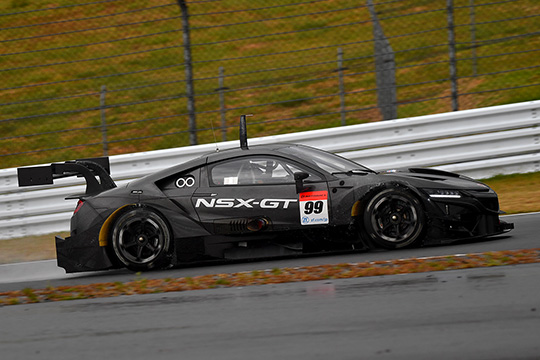
| 4/13-14 | Round1 OKAYAMA | |
| 5/03-04 | Round2 FUJI | |
| 6/01-02 | Round3 SUZUKA | |
| 8/03-04 | Round4 FUJI | |
| 8/31-9/01 | Round5 SUZUKA | |
| 9/21-22 | Round6 SUGO | |
| 10/19-20 | Round7 AUTOPOLIS | |
| 11/02-03 | Round8 MOTEGI |